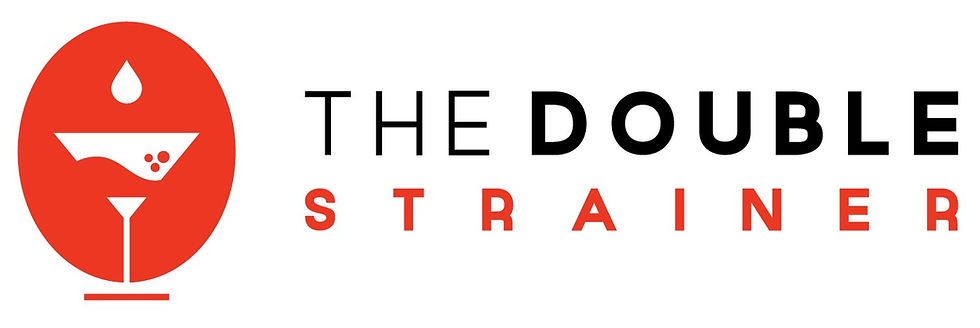The Art of Dehydration in Mixology: Techniques, Tools, and Flavor Transformation
- infothedoublestrai
- Nov 18
- 4 min read

Dehydration is one of the most practical and transformative techniques in modern mixology. Whether used for garnish aesthetics, shelf-stable infusions, or to concentrate the flavor of fruits and herbs, learning how to dehydrate ingredients correctly can elevate your cocktail presentation and deepen its aromatic complexity.
Let’s explore the science, methods, and creative potential behind drying ingredients for the bar.
Why Dehydrate?
Dehydration isn’t just about preservation.By removing water, you concentrate sugars, acids, and aromatic compounds — intensifying flavor and aroma while changing texture.
For bartenders, this means versatility and control:
Visual impact: thin citrus wheels, crystallized herbs, or jewel-like berries.
Flavor intensity: a dried orange wheel adds caramelized sweetness; dried pineapple brings tropical depth.
Sustainability: a smart way to repurpose leftover fruit or herbs, minimizing waste.
Preparation control: dehydrated ingredients can be stored and used instantly, without oxidation or spoilage.
Tools of the Trade
1. Dehydrator (Professional or Home)• Precise temperature control and consistent airflow.• Ideal for: all fruits, citrus, herbs, and edible flowers.
2. Convection Oven• Works perfectly if the temperature can be set below 70 °C / 160 °F.• Ideal for: fruits, vegetables, and quick citrus prep.
3. Air Fryer (Dehydration Mode)• Fast and efficient, though not ideal for delicate herbs.• Ideal for: citrus wheels and apple slices.
4. Microwave or Low-Heat Pan• Useful for quick fixes but can cause uneven drying or burnt edges.• Ideal for: emergency or last-minute drying only.
5. Natural Sun-Drying• Eco-friendly but unpredictable — humidity and insects can interfere.• Ideal for: hardy fruits or peels in dry climates.
Understanding Your Equipment
Not all dehydrators are created equal.The way air circulates inside determines how evenly and efficiently ingredients dry. Here’s what you should know:
Vertical Airflow Dehydrators
Air moves from bottom to top or top to bottom.
Compact and affordable but require rotating trays for even results.
Great for herbs, citrus, and flowers.
Horizontal Airflow Dehydrators
Air moves evenly across trays from a rear-mounted fan.
Consistent drying, no rotation needed.
Preferred by professionals for fruits and vegetables.
Convection Ovens
Built-in fan mimics horizontal airflow.
Easy to use; just keep the door slightly open to let moisture escape.
Ideal for citrus or ginger slices.
Air Fryers (Dehydration Mode)
Very fast; best for small batches.
Be careful with light ingredients like mint or flowers — they can fly or burn.
Natural Air-Drying
Works in low-humidity environments.
Gentle and energy-free, but sensitive to climate.
Perfect for rosemary, thyme, or citrus peels.

The Science: Time & Temperature
The goal is slow, even moisture removal without cooking.
Here’s a practical guide by ingredient type:
Citrus (lemon, lime, orange, grapefruit)
• Temperature: 55–60 °C / 130–140 °F
• Time: 6–10 hours
• Tip: slice 2–3 mm thick for even drying.
Tropical Fruits (pineapple, mango, jackfruit)
• Temperature: 50–55 °C / 120–130 °F
• Time: 8–12 hours
• Tip: rotate trays halfway; higher sugar = longer time.
Apples & Pears
• Temperature: 55–60 °C
• Time: 6–8 hours
• Tip: dip in lemon juice to prevent browning.
Berries (strawberry, blueberry)
• Temperature: 45–50 °C
• Time: 10–14 hours
• Tip: slice larger berries in half.
Herbs (mint, basil, rosemary, thyme)
• Temperature: 35–45 °C
• Time: 2–4 hours
• Tip: low heat preserves essential oils.
Edible Flowers
• Temperature: 35–40 °C
• Time: 2–3 hours
• Tip: handle gently to preserve color and shape.
Vegetables (chili, beet, cucumber)
• Temperature: 55–60 °C
• Time: 5–8 hours
• Tip: great for powders, chips, or flavored salts.
Best Techniques by Ingredient
Citrus WheelsUse a dehydrator or convection oven. Slice evenly, blot extra juice, and dry until translucent.Result: concentrated, lightly caramelized flavor — perfect for Old Fashioneds or sours.
Pineapple or MangoUse a dehydrator. Try marinating in syrup or spiced rum first for a richer profile.Result: chewy, candy-like texture for tropical and tiki serves.
Herbs (Mint, Basil, Lemongrass)Low-temperature drying is essential. Place between parchment sheets to prevent curling.Result: refined aroma for powders, rim salts, or infusions.
Edible FlowersDry gently with a transparent-lid dehydrator to preserve shape.Result: colorful and delicate — ideal for martinis or champagne serves.
Chili, Beet, or GingerThinly sliced, dried at medium heat.Result: intense umami or spice concentration — perfect for powders or edible décor.
Flavor Chemistry: What Changes
When water leaves, flavor molecules become more volatile — and that changes everything.
Aromas intensify and become sharper.
Sweetness increases as sugars concentrate.
Acidity softens slightly.
Bitterness may appear if the temperature is too high.
Precision matters: too hot, and you cook it; too cool, and you risk mold.
When & Why to Dehydrate
Garnish Prep – Beautiful, stable citrus or herbs for consistent presentation.Flavor Intensity – Create powders or flakes to dust foams, rims, or glass edges.Sustainability – Give new life to fruit peels and leftovers.Storage Optimization – Ideal for pre-event prep and limited refrigeration.
Storage and Shelf Life
Store in airtight jars or vacuum bags, ideally with silica gel packs or a small pouch of rice to absorb humidity.Keep away from sunlight and heat.
Shelf life:
Fruits → 3–6 months
Herbs & Flowers → 1–2 months
Creative Applications Behind the Bar
Powdered citrus peel: perfect for flavored salts or sugars.
Herbal dusts: mint or basil powder over foams.
Infusion base: dehydrated pineapple + rum = tropical syrup alternative.
Rehydration trick: soak dried berries in spirits for a quick aromatic garnish.
Final Thoughts
Dehydration is one of the quiet arts behind great cocktails — a bridge between science, sustainability, and aesthetics.When mastered, it lets bartenders extend ingredient life, enhance flavors, and showcase creativity long before the shake or stir begins.
Written by Riccardo Grechi – Head Mixologist & Author of The Double Strainer
For more articles about mixology knowledge click HERE
and stay up to date subscribing to our newsletter HERE







Comments